Tone Bender
The Tone Bender is one of the most iconic fuzz effects from the 60s. With this PCB you can build the original or many other variants using either PNP or NPN transistors.Steps
Categories
Status: Active
Designators and components Step 2 of 5
COMPONENT LIST
PCB
PCB TONE BENDER PCB
Capacitors
C1 10n 10NF 100V 5% POLYESTER FILM BOX TYPE CAPACITOR
C2 4.7u 4.7UF 50V ELECTROLYTIC CAPACITOR 5X11MM
C3 100n 100NF 100V 5% POLYESTER FILM BOX TYPE CAPACITOR
C4 10n 10NF 100V 5% POLYESTER FILM BOX TYPE CAPACITOR
C5 4.7u 4.7UF 50V ELECTROLYTIC CAPACITOR 5X11MM
C6 47u 47UF 50V ELECTROLYTIC CAPACITOR 6X11MM
Transistors (NPN version)
Q1 2N3904 2N3904 NPN GENERAL PURPOSE TRANSISTOR
Q2 2N3904 2N3904 NPN GENERAL PURPOSE TRANSISTOR
Q3 2N3904 2N3904 NPN GENERAL PURPOSE TRANSISTOR
Resistors
R1 100k 100K OHM 1/4W 1% METAL FILM RESISTOR
R2 10k 10K OHM 1/4W 1% METAL FILM RESISTOR
R3 100k 100K OHM 1/4W 1% METAL FILM RESISTOR
R4 470 470 OHM 1/4W 1% METAL FILM RESISTOR
R5 1M 1M OHM 1/4W 1% METAL FILM RESISTOR
BIASQ2 100k 100K OHM TRIMMER POTENTIOMETER
BIASQ3 10k 10K OHM TRIMMER POTENTIOMETER
Potentiometers
VOL 100k-A 100K OHM LOGARITHMIC TAPER POTENTIOMETER
FUZZ 1k-B 1K OHM LINEAR TAPER POTENTIOMETER
PCB
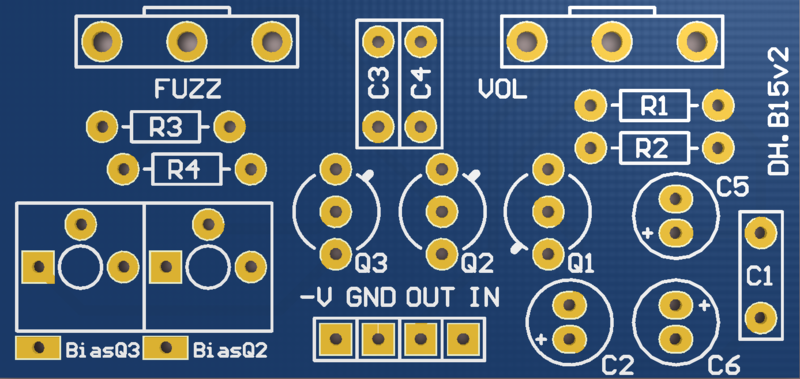
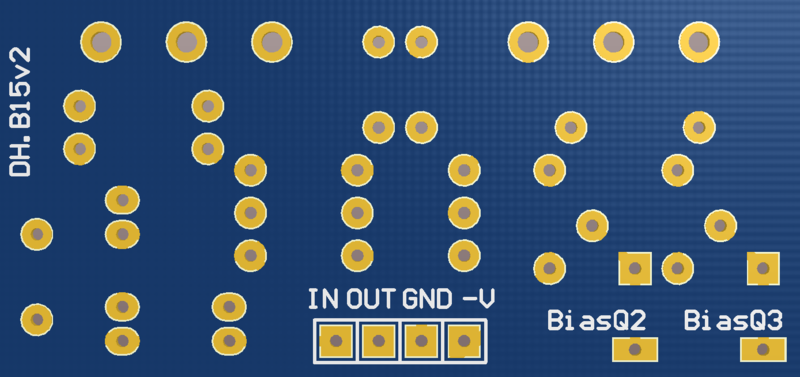
PCB SCHEMATIC
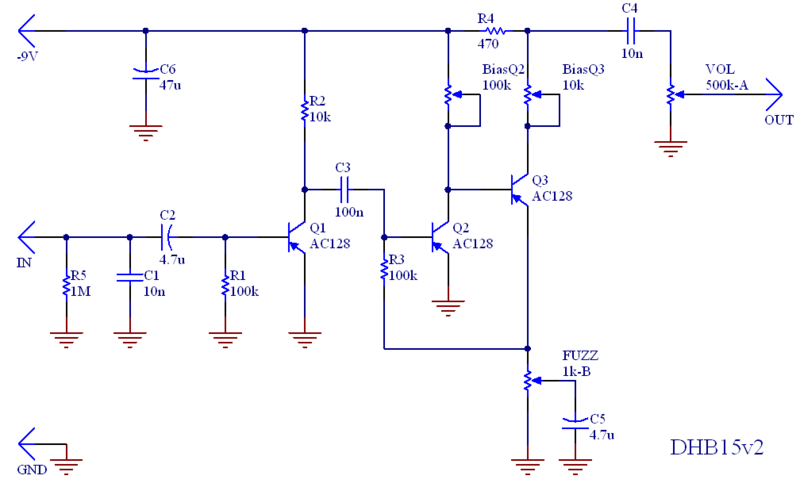
TRANSISTORS
The original Tonebender uses germanium transistors (AC128). Select the gain for each transistor within the following ranges:
Q1: β = 70-90
Q2: β = 50-70
Q3: β = 110-130
For the PNP silicon version, use 2N3906.
For NPN silicon version, use 2N3904, BC108 or BC109. To use the negative ground version (NPN transistors), flip the polarity of the electrolytic capacitors (C2, C5, and C6) and connect the +9V power supply to the pad marked as -9V.
Capacitors for PNP version Capacitors for NPN version
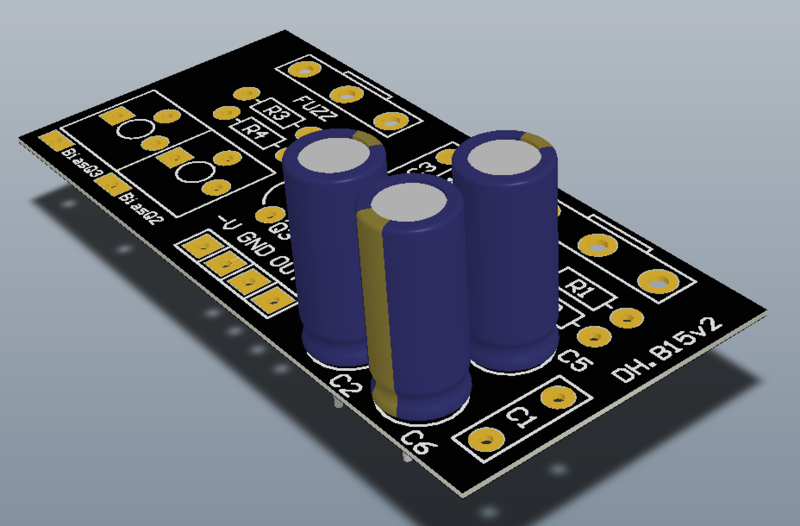
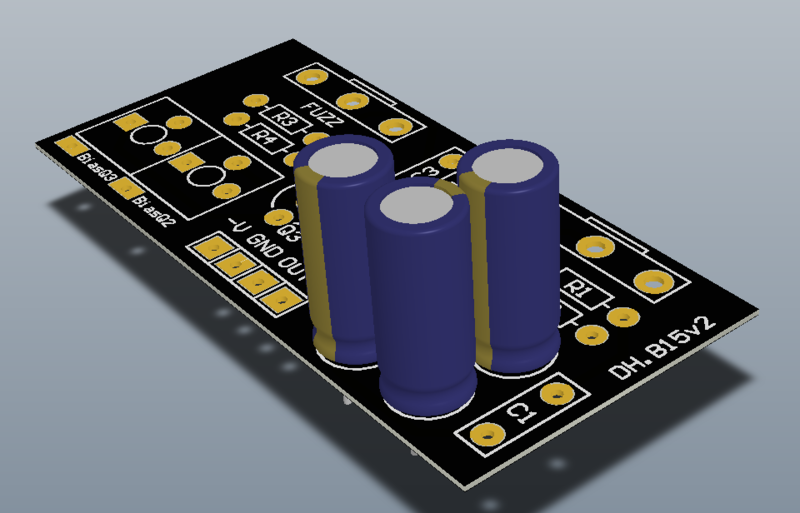
Refer to the images below for the correct transistor orientation.
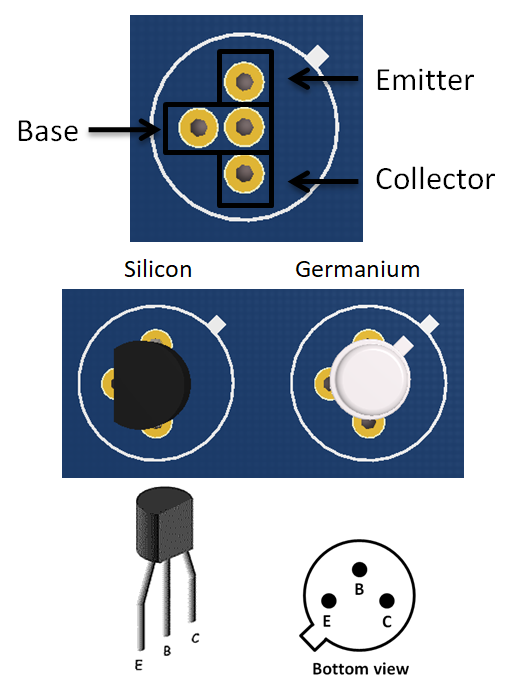
TRANSISTOR SOCKETS
For easy swapping and experimentation, use either 3-PIN HEADERS or dedicated transistor sockets.
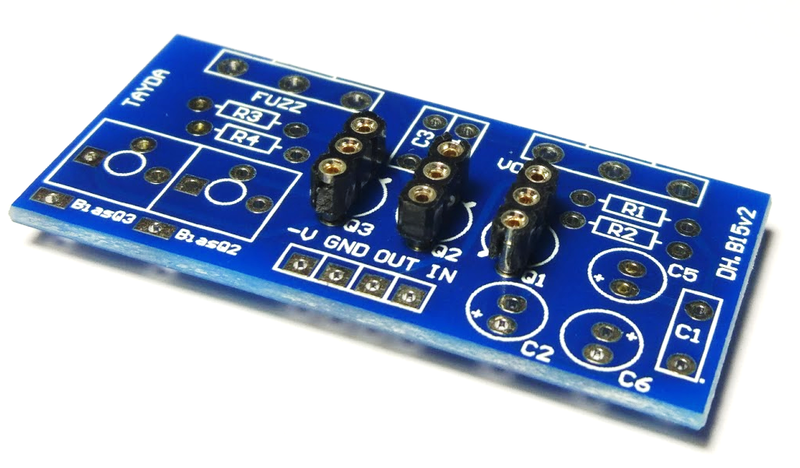
BIASING THE CIRCUIT
Use the trimmers to bias the circuit by measuring the voltage at the Bias pads with a voltmeter. First, adjust the Bias2 trimmer until the voltage is between –0.5 V and –1.75 V. Then, adjust Bias3 until the voltage is between –7.5 V and –8.5 V. Keep in mind that if you are using germanium transistors, the voltage will be affected by temperature.
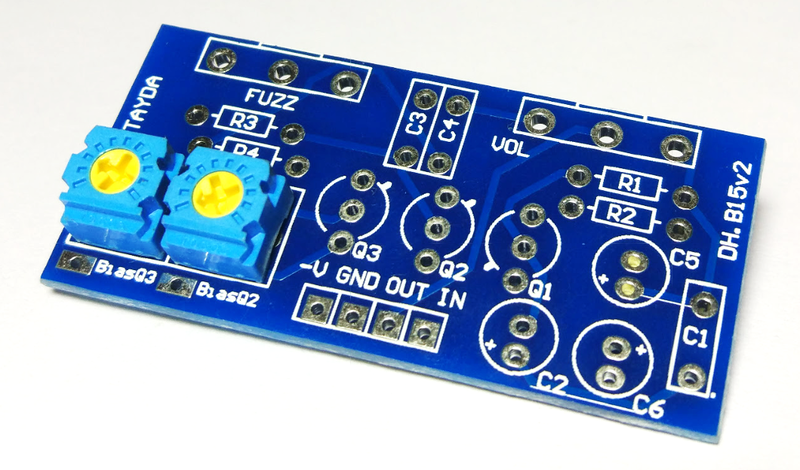
POWER SUPPLY CHAIN WITH POSITIVE GROUND PEDAL
A positive ground pedal cannot be directly connected to the power supply in chain with your other negative ground pedals. Use the Charge Pump PCB to build a voltage inverter and power your positive ground pedal in chain with the rest of your pedals.
